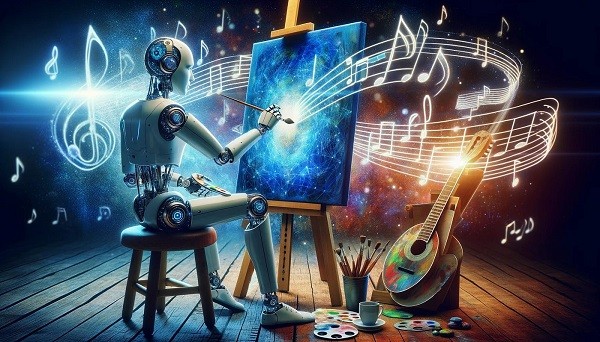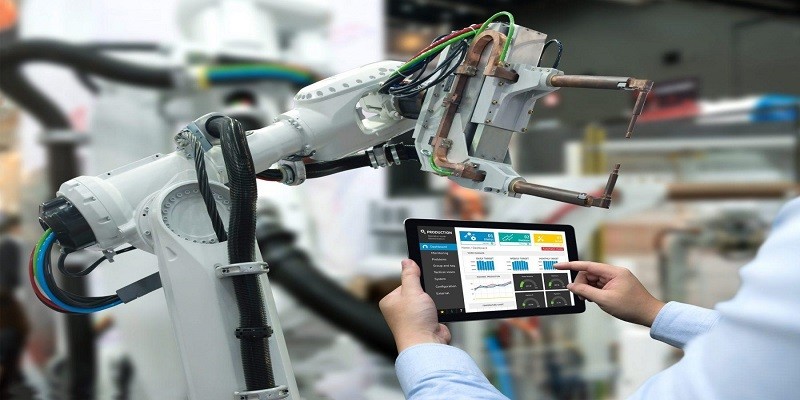Last Updated on May 9, 2025 by Jim C.
Artificial Intelligence is ushering in a new era of design in the creative industries. This technology is transforming the way designers create, innovate, and collaborate, leading to more efficient and impactful designs.
The Role Of AI in Creative Industries
Enhancing Design Processes
Artificial Intelligence revolutionizes creative industries by enhancing design processes. AI tools offer innovative solutions for designers to streamline their workflows. From generating design ideas to optimizing layouts, AI creates efficiencies in the design journey.
Automating Repetitive Tasks
Artificial Intelligence plays a pivotal role in creative industries by automating mundane tasks. From sorting files to organizing data, AI frees up creative professionals’ time for higher-level tasks. By automating repetitive processes, AI empowers designers to focus on their craft.

Impact On Design And Innovation
Artificial Intelligence (AI) has made significant strides in recent years, revolutionizing various industries. Its impact on design and innovation is particularly profound, paving the way for a new era of creativity and ingenuity. With AI-powered tools and algorithms, designers can push the boundaries of what is possible, unlocking new design trends and fostering a culture of creativity.
Ai-driven Design Trends
The integration of AI in the creative industries has given rise to a host of new design trends that were previously unimaginable. With AI algorithms analyzing massive amounts of data, designers can now gain insight into consumer preferences and behavior patterns on an unprecedented scale. This data-driven approach to design facilitates the identification of emerging trends, enabling designers to stay ahead of the curve.
Bold and striking visual compositions are one such trend that has been made possible by AI. Through the analysis of colors, shapes, and typography, AI algorithms can now generate aesthetically pleasing designs that captivate and engage audiences. The result is a visual language that speaks directly to target consumers, making brands more memorable and impactful.
Another AI-driven design trend is the customization and personalization of design elements. With AI-powered tools, designers can create unique variations of their designs tailored to specific customers, allowing for a more personalized and targeted approach. This level of customization not only enhances the user experience but also helps brands establish a deeper connection with their audience.
Fostering Creativity In Design
Contrary to popular belief, AI does not stifle creativity; rather, it amplifies it. By automating repetitive and time-consuming tasks, designers can now focus on the more creative aspects of their work. AI-powered tools can generate initial design concepts, leaving designers with more time and mental space to explore innovative ideas and experimental design approaches.
Additionally, AI can act as a collaborative partner to designers, offering suggestions and insights that can spark fresh ideas. By analyzing vast amounts of data, AI algorithms can identify patterns and connections that humans may have overlooked, leading to groundbreaking design solutions. This collaboration between human creativity and AI-driven insights fosters a symbiotic relationship, resulting in designs that push the boundaries of innovation.
Furthermore, the integration of AI in design processes enables designers to streamline their workflow and enhance productivity. By automating repetitive tasks such as resizing images or generating design variations, designers can allocate their time and energy to more high-value creative tasks. This not only saves time but also allows designers to iterate and experiment more, ultimately leading to more innovative and impactful design solutions.
Challenges And Ethical Considerations
As artificial intelligence (AI) continues to revolutionize creative industries like design, it also brings forth a range of challenges and ethical considerations to be addressed. From the potential job displacement to the ethical use of AI in design, these factors play a crucial role in shaping the future of the industry.
Potential Job Displacement
The integration of AI technology in design processes has the potential to streamline workflows and enhance productivity. However, this advancement can also lead to concerns about job displacement. As AI algorithms become more advanced and capable of producing design work, it may limit the need for human designers. Organizations and professionals in the industry must adapt to this new reality by acquiring skills that complement AI capabilities and exploring new career paths within a technology-driven landscape.
Ethical Use Of AI in Design
The ethical considerations surrounding AI in design are intertwined with ensuring fairness, privacy, and accountability. Designers and organizations utilizing AI must be vigilant about the biases that AI systems may inherit from training data. Transparent decision-making processes are crucial to promote trust and avoid exclusion or discrimination. Additionally, preserving individuals’ privacy and safeguarding sensitive information is a paramount concern in the era of AI. Designers and organizations need to establish robust protocols and guidelines to protect user data and maintain trust with their audience.
Future Of AI in Creative Industries
Exciting advancements in the integration of Artificial Intelligence (AI) with creative industries are revolutionizing the way design is approached. AI is paving the way for a new era of innovation, enabling designers to explore uncharted territories and unlock unparalleled creative possibilities.
Artificial Intelligence As A Collaborator
AI serves as a valuable collaborator for creatives, providing assistance in generating ideas, enhancing workflows, and even predicting trends. Designers can leverage AI algorithms to streamline the design process and push the boundaries of imagination.
Integration Of AI and Human Creativity
The seamless integration of AI and human creativity is reshaping how design projects are conceptualized and executed. By combining the analytical power of AI with the artistic flair of humans, a harmonious synergy is achieved, resulting in innovative and impactful creations.
Frequently Asked Questions
What Are The Main Benefits Of Using AI in Creative Industries?
AI in creative industries streamlines workflows enhances creativity and improves efficiency in design processes.
How Does Ai Technology Impact The Design Process In Creative Industries?
AI technology revolutionizes the design process by automating repetitive tasks, analyzing trends, and generating unique insights for creative projects.
What Role Does AI Play In Personalized User Experiences Within Creative Industries?
AI in creative industries facilitates personalized user experiences through data analysis, enabling businesses to tailor design solutions to individual preferences.
Can AI in Creative Industries Assist In Predicting Future Design Trends?
Yes, AI analyzes vast datasets and consumer behavior patterns to accurately forecast future design trends, enabling designers to stay ahead of the curve.
How Does AI in Creative Industries Contribute To Enhancing Collaboration Among Design Teams?
AI fosters collaboration within design teams by providing seamless communication, automating mundane tasks, and offering valuable insights for informed decision-making.
Conclusion
Artificial Intelligence is revolutionizing creative industries, transforming the way design is approached. With AI tools leading the charge in innovation and efficiency, designers are unlocking new realms of creativity. Embracing this technological shift will undoubtedly shape a new era of limitless possibilities in the world of design.

